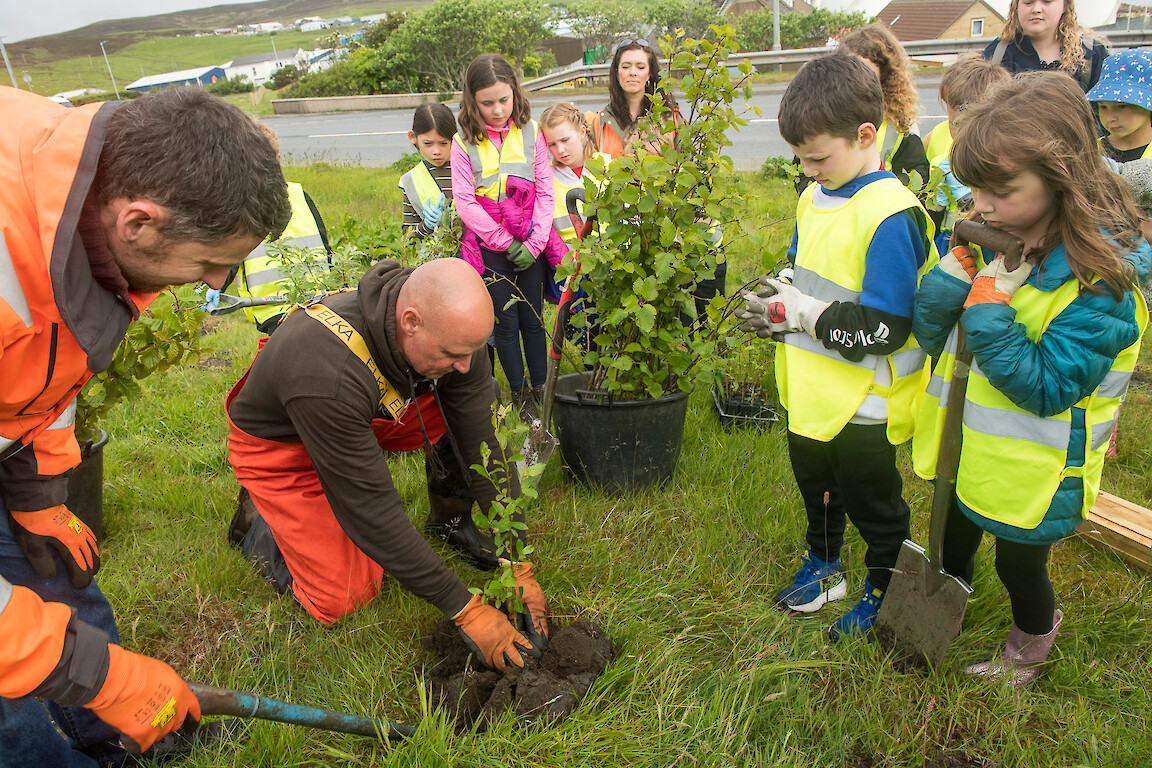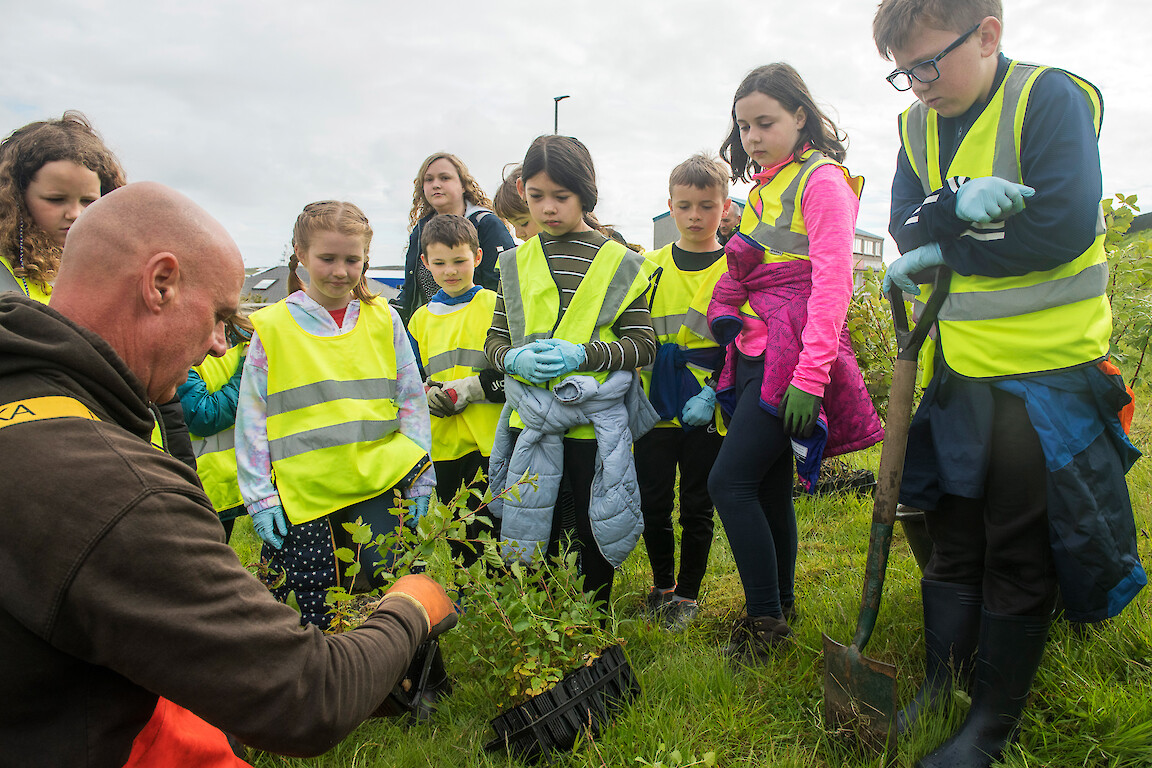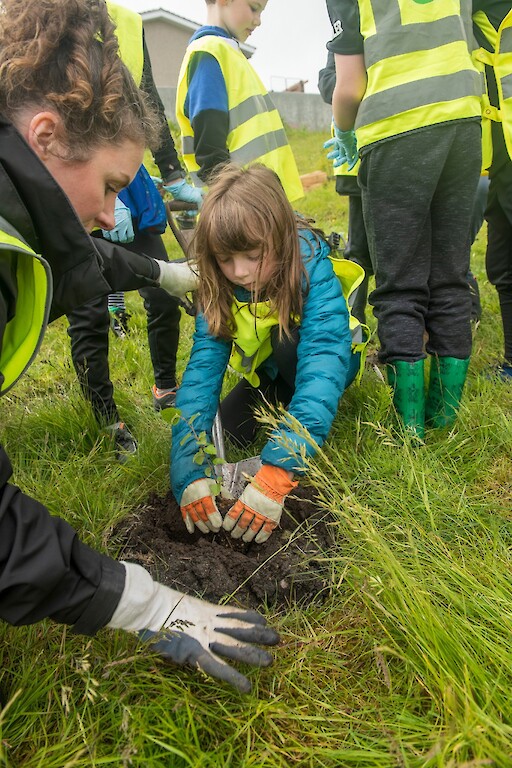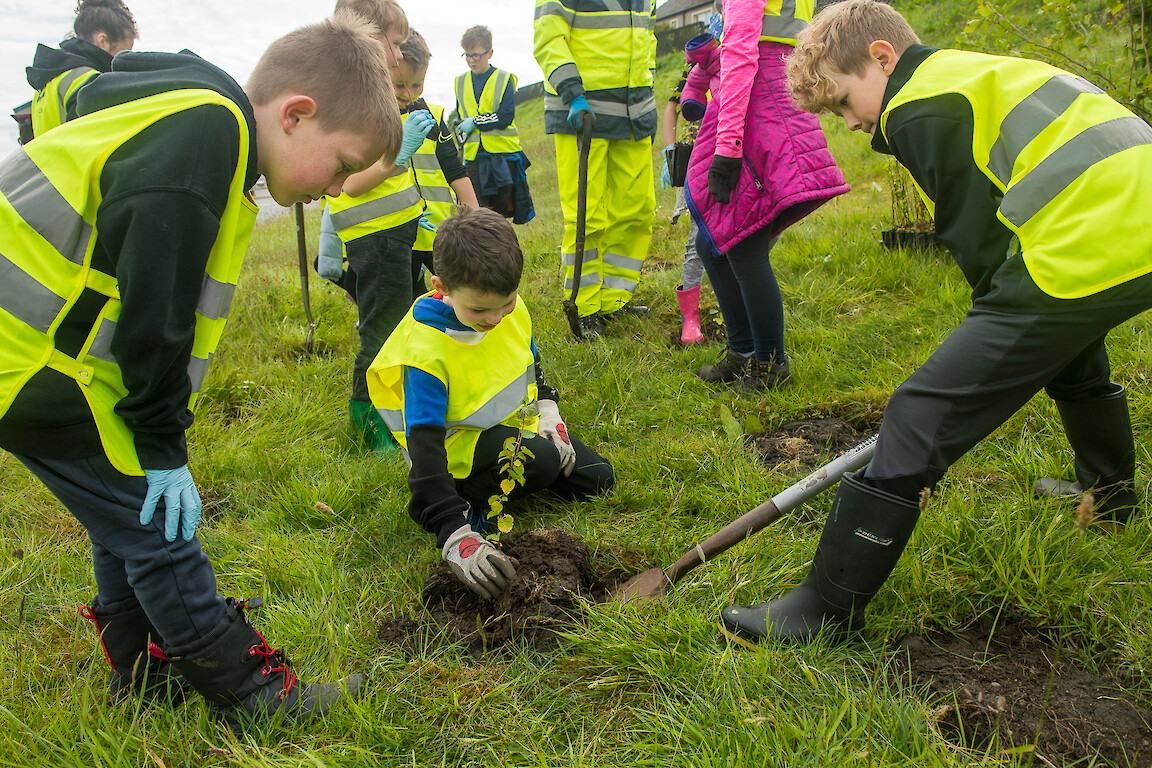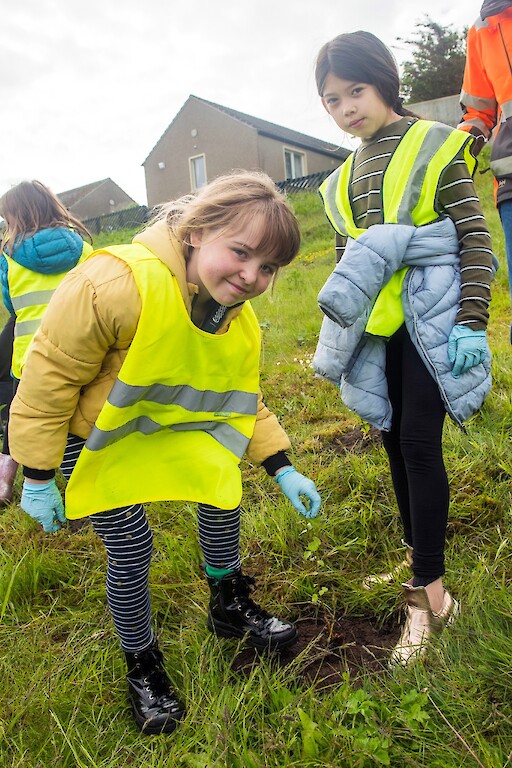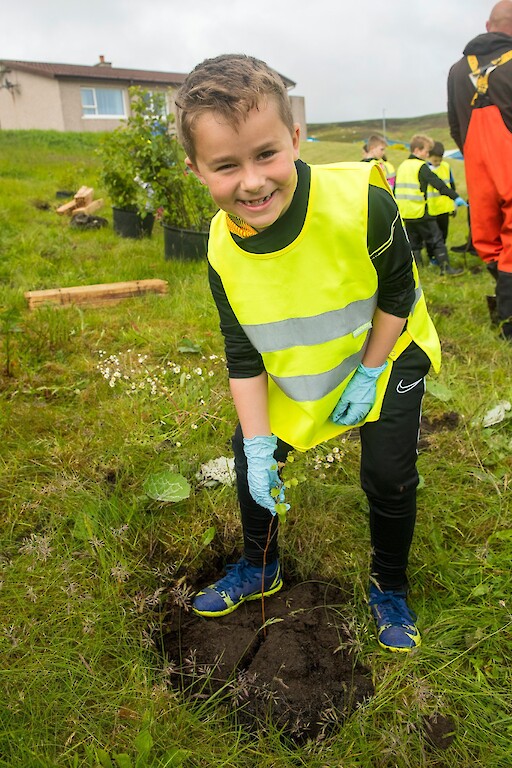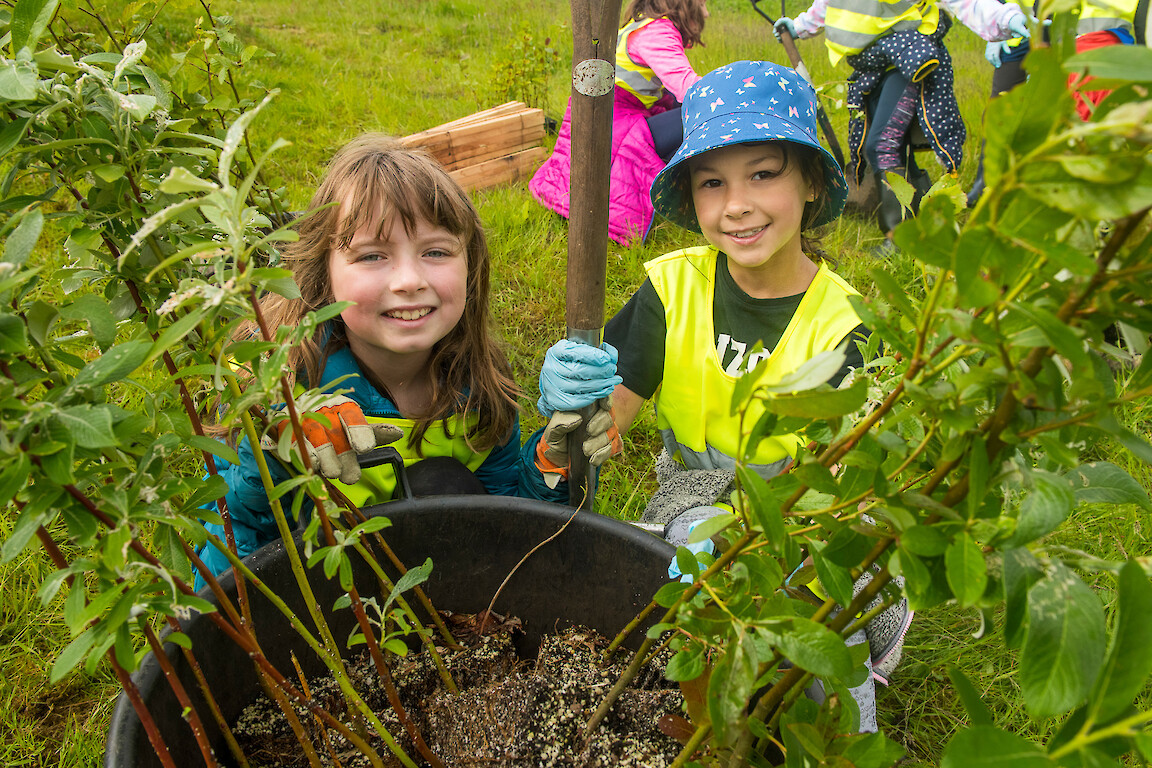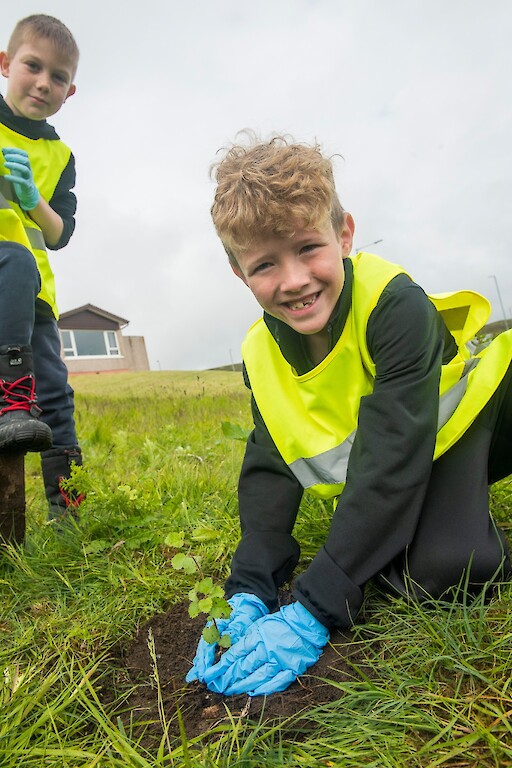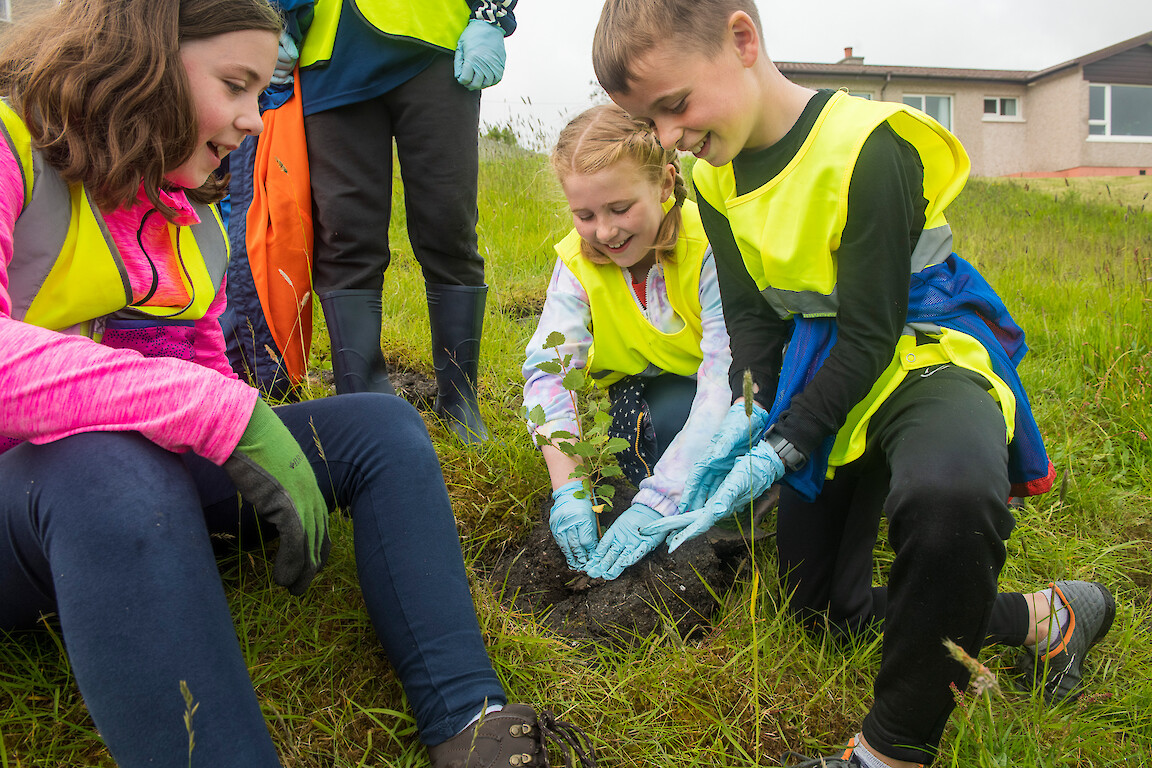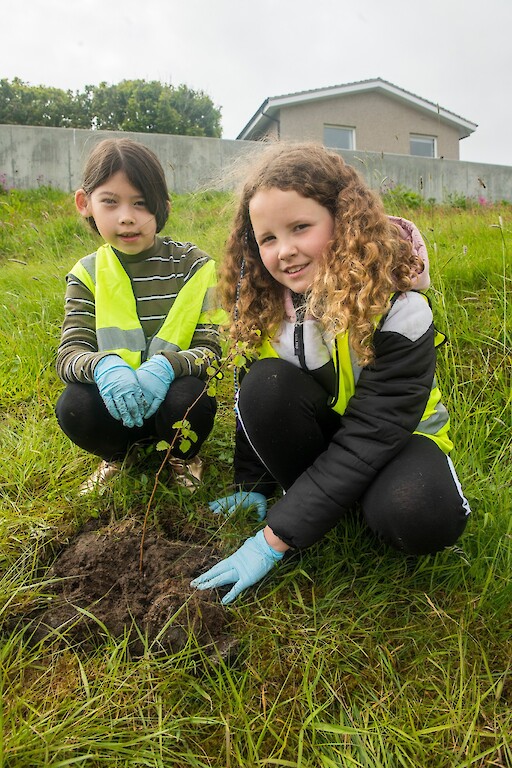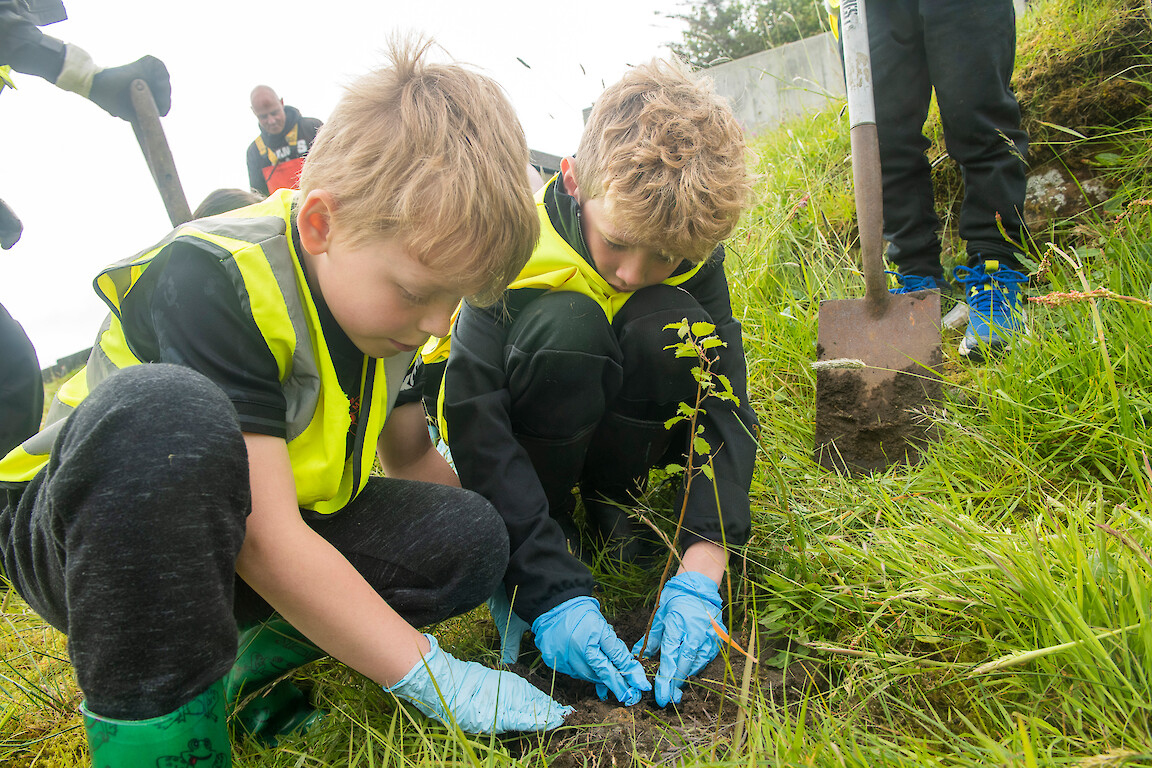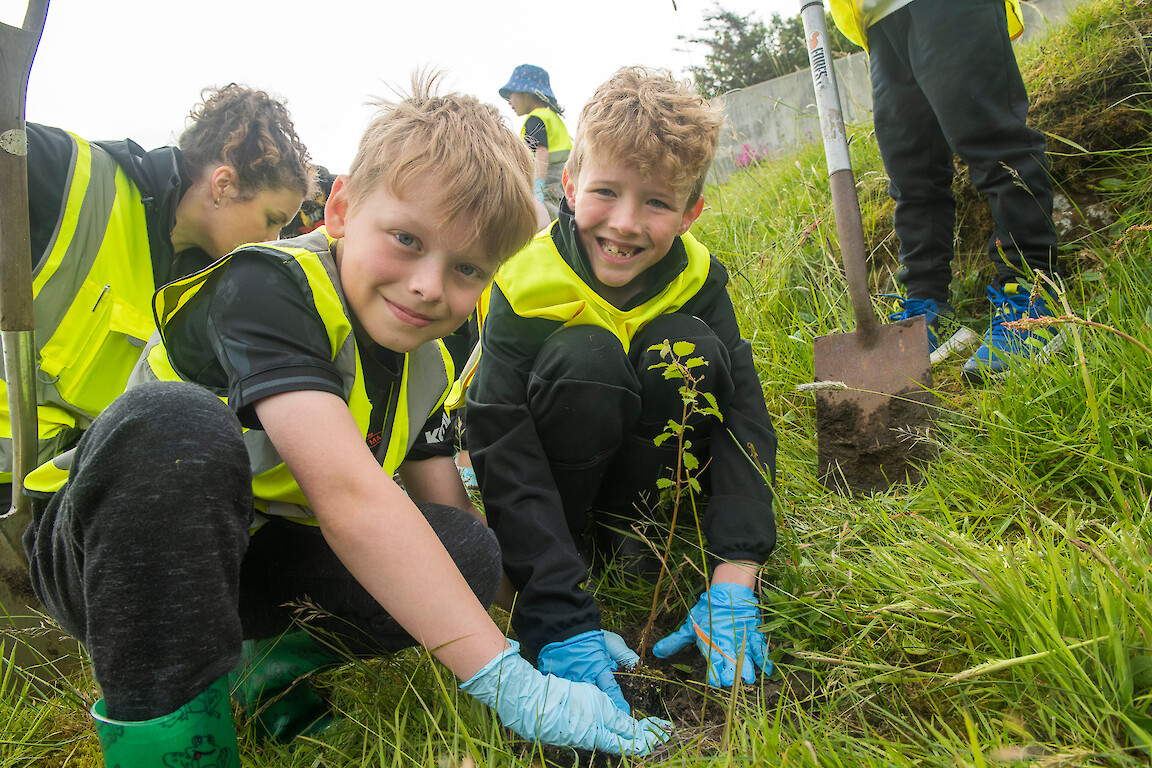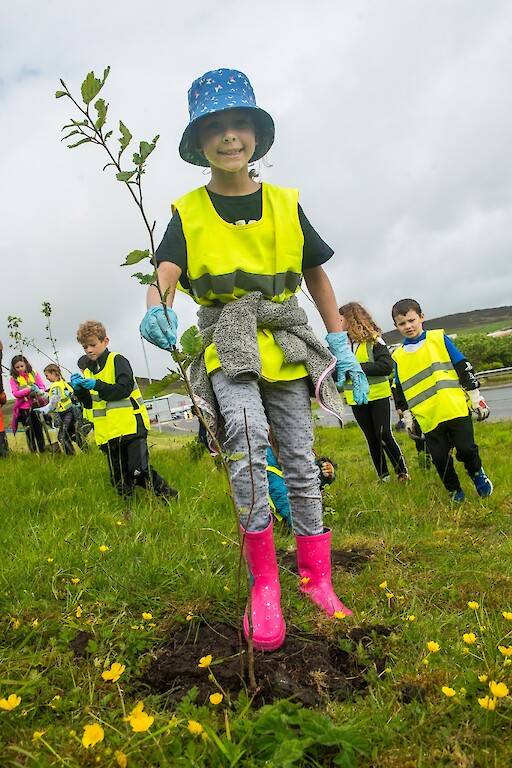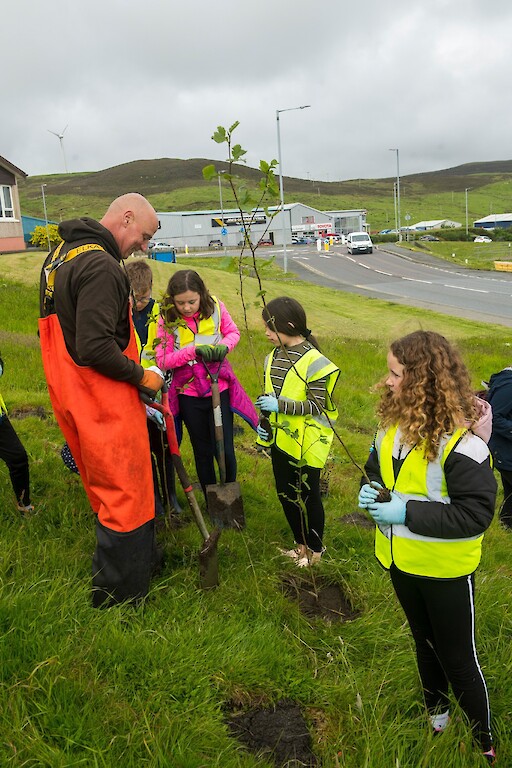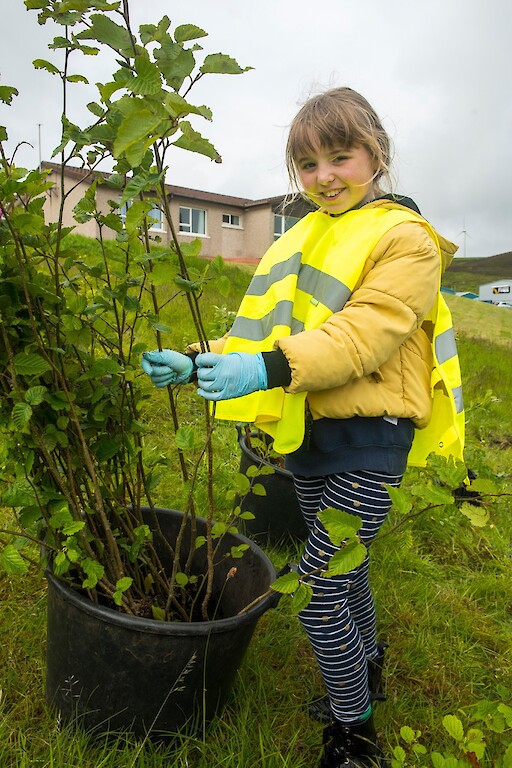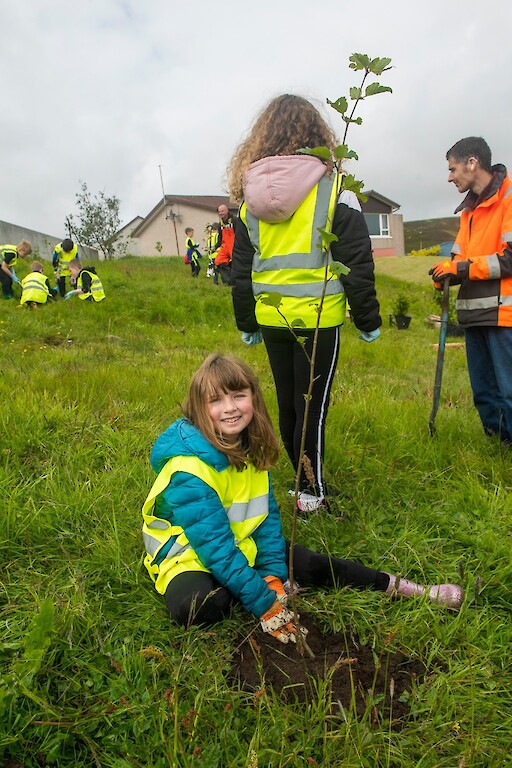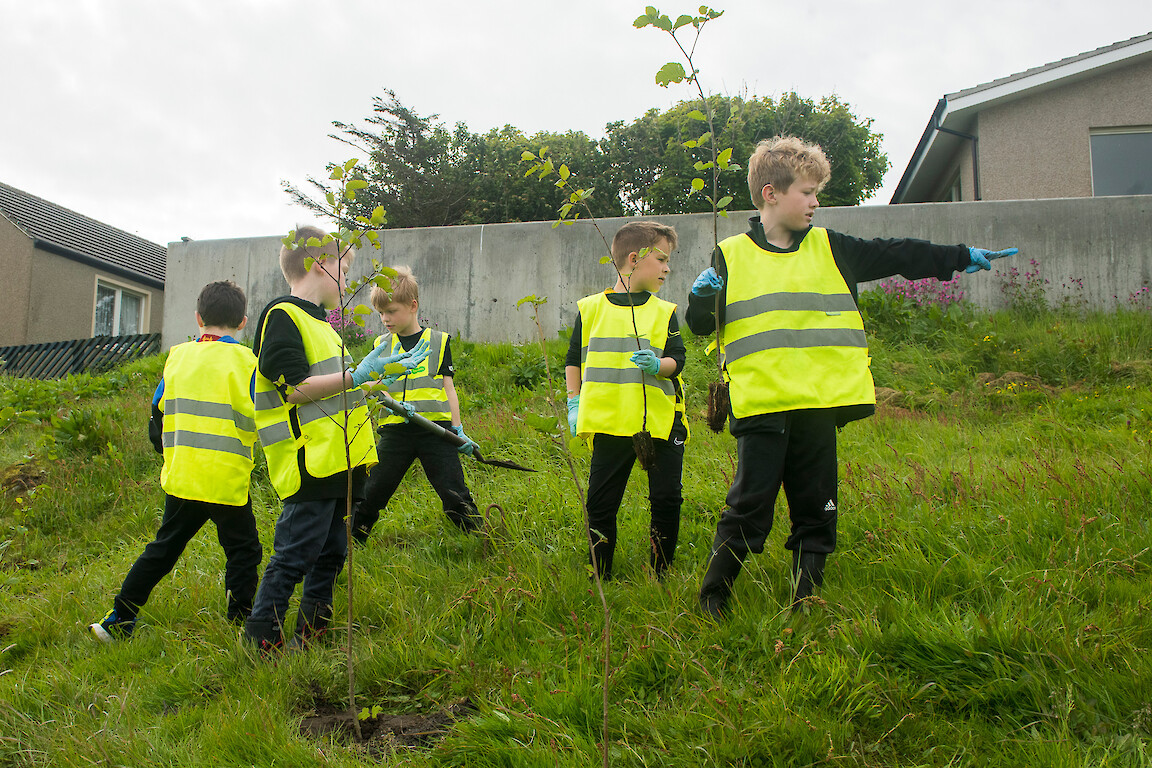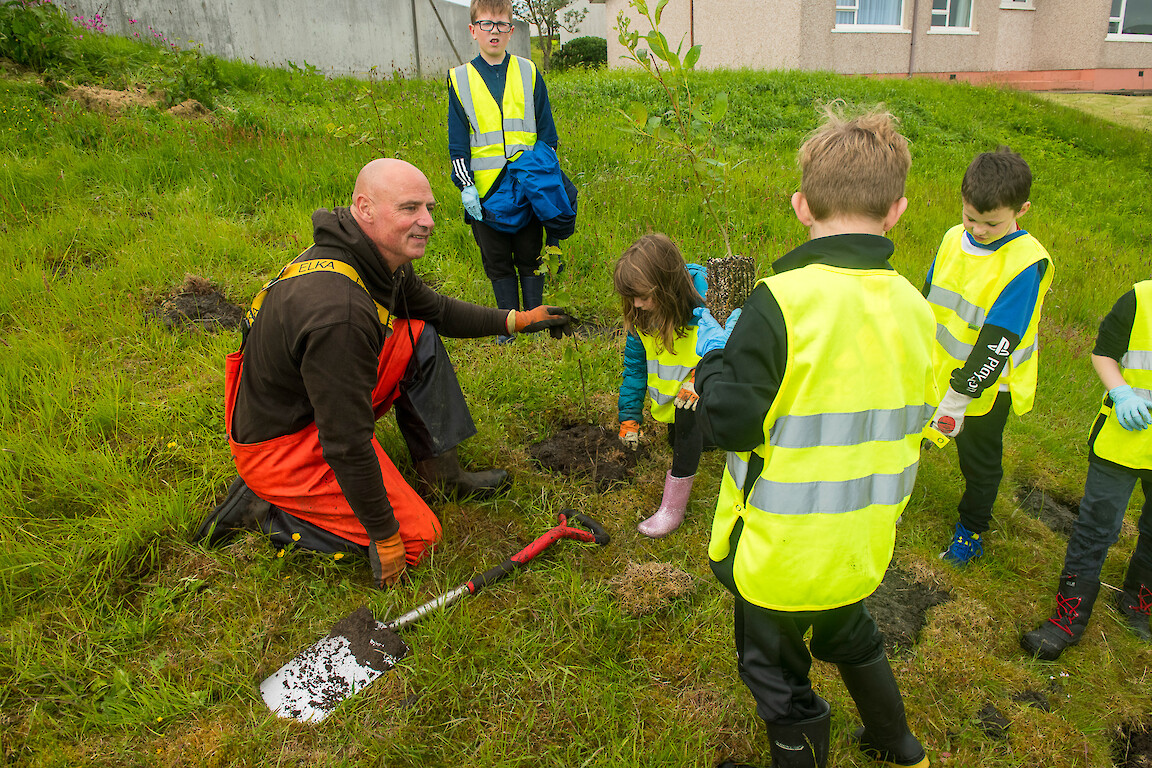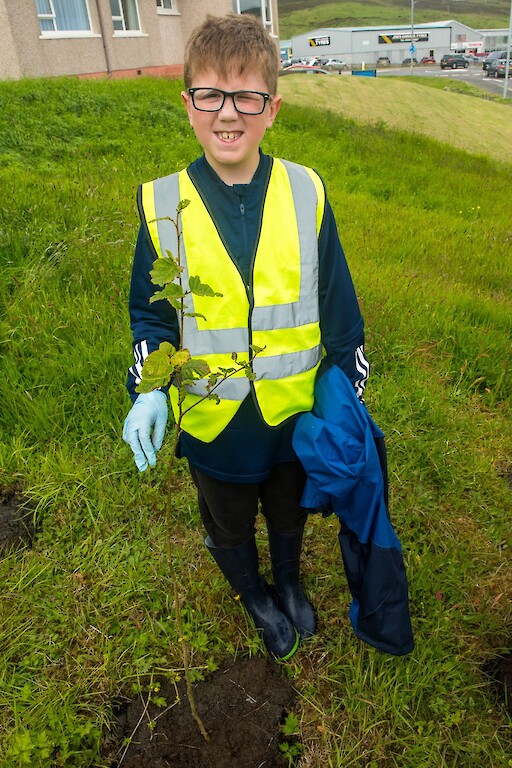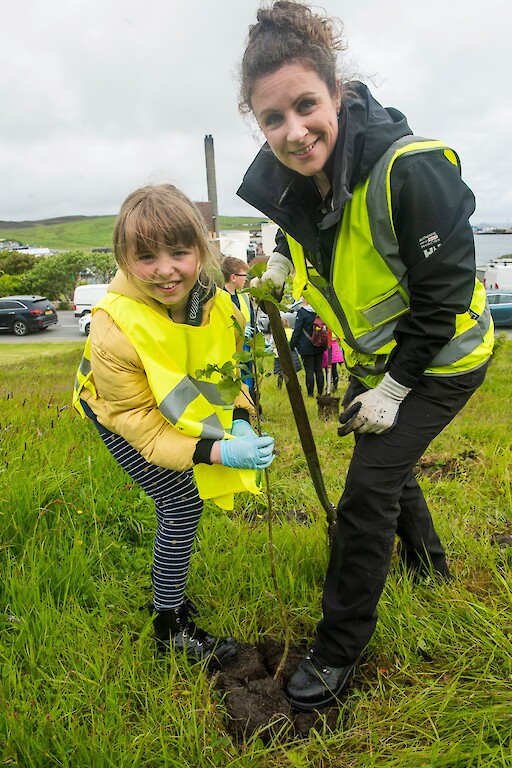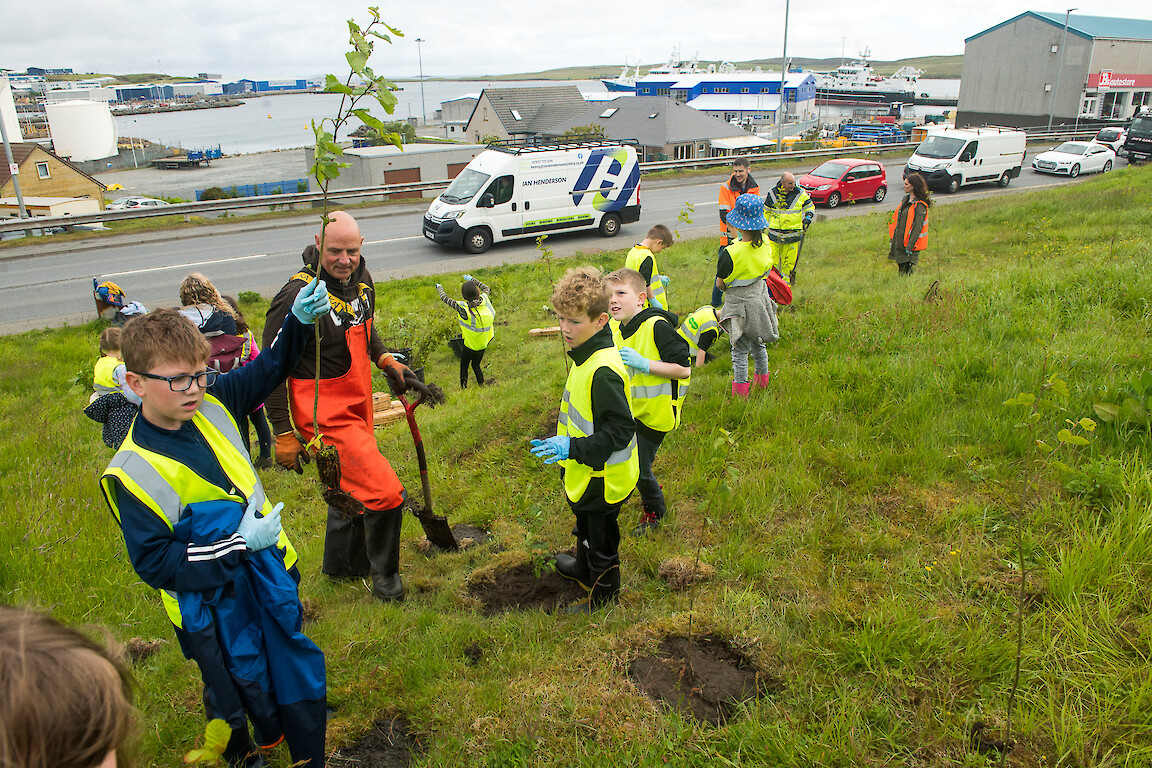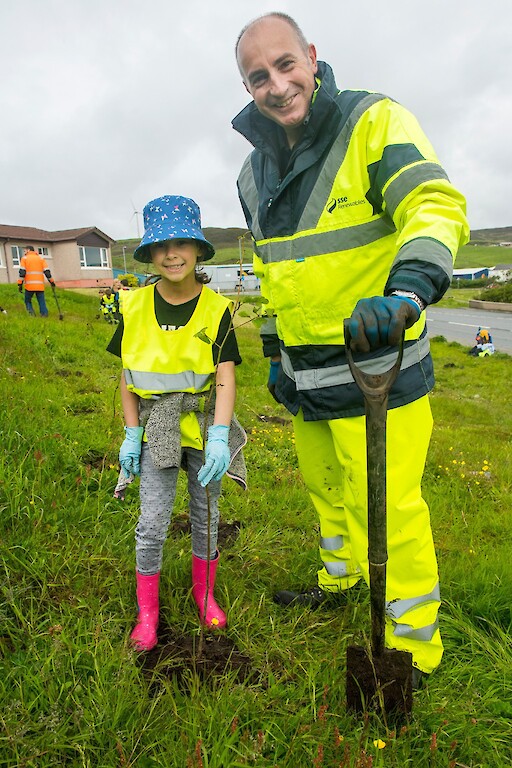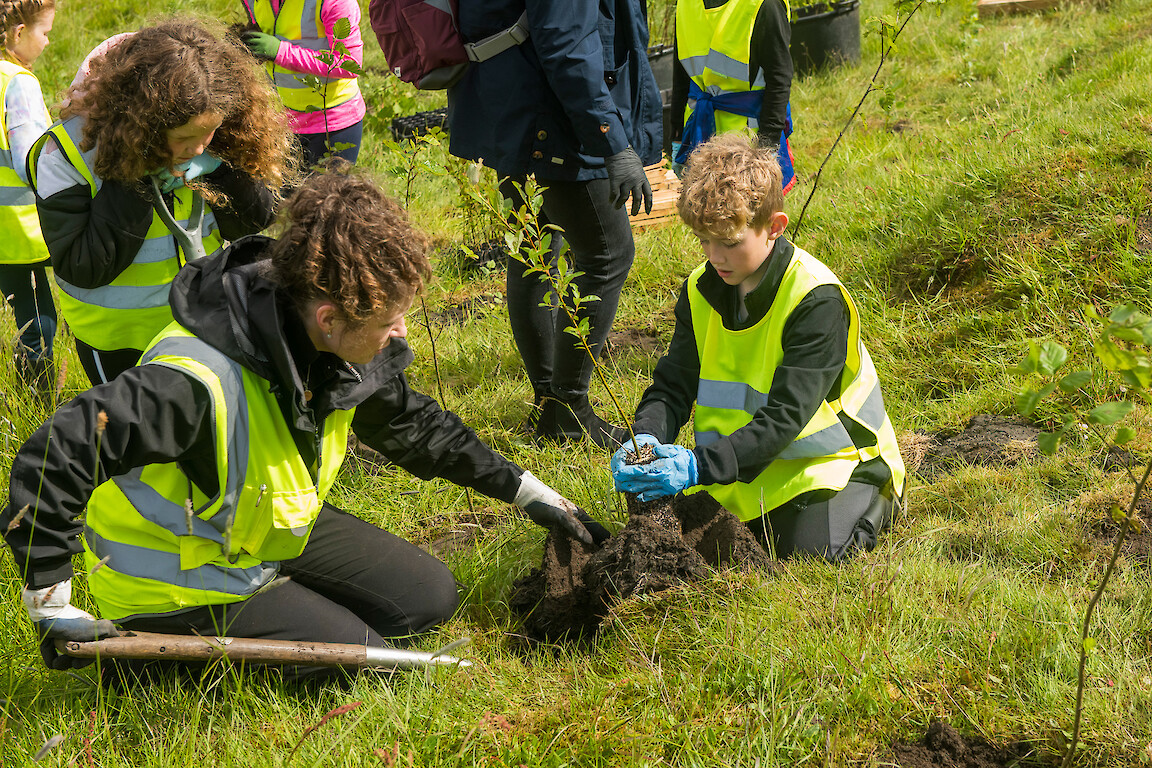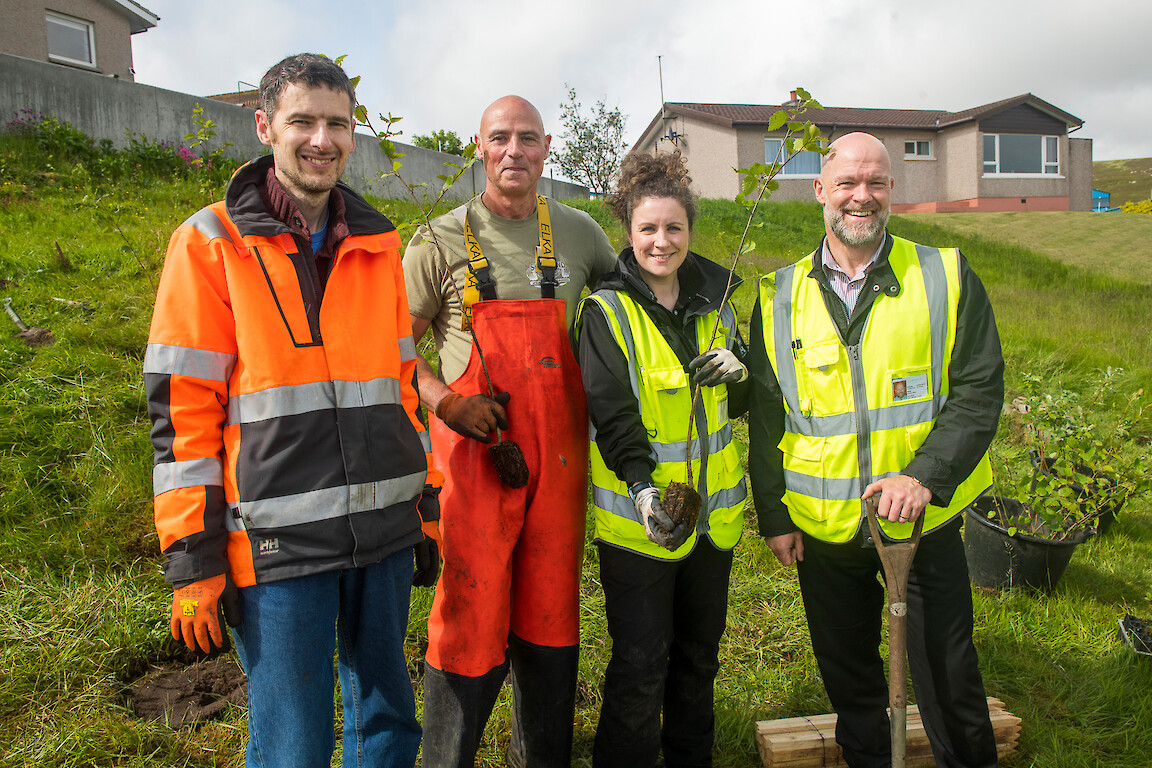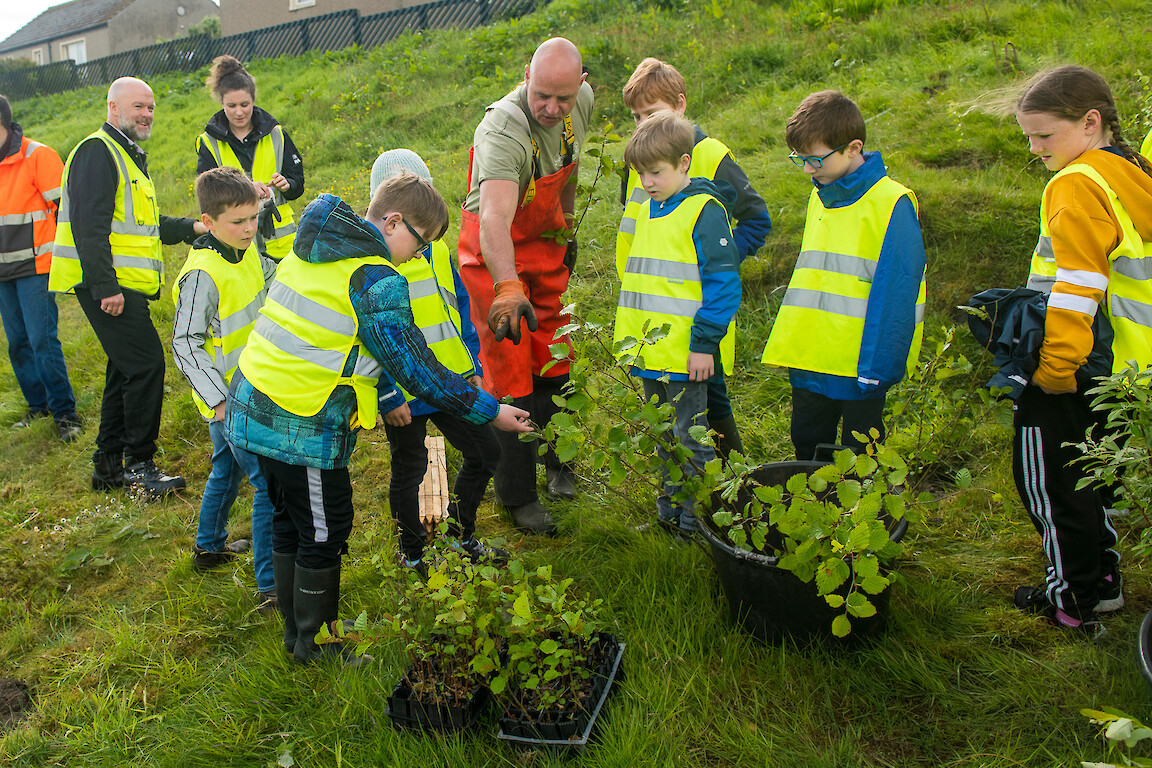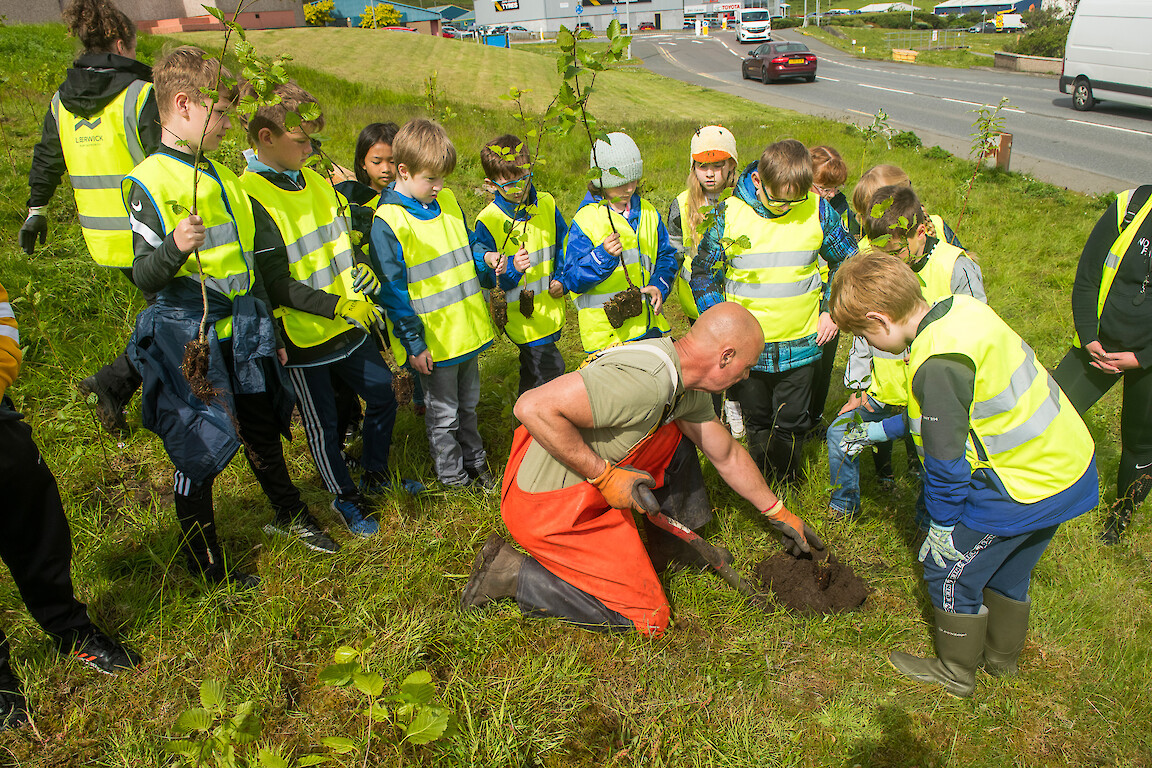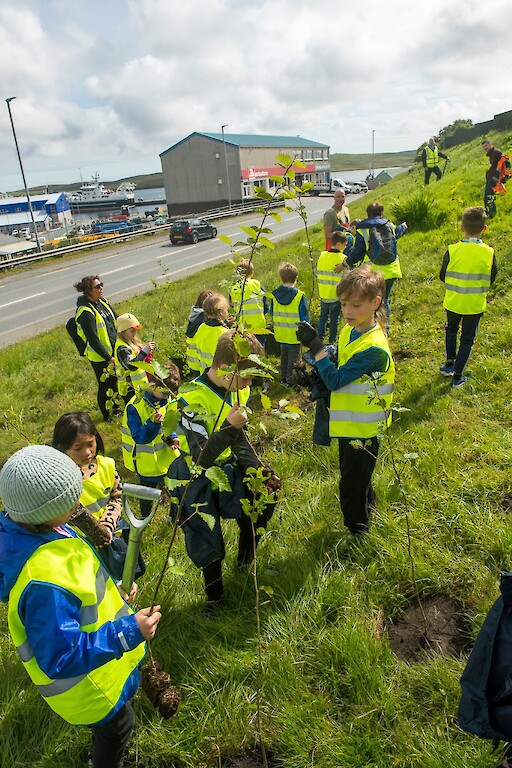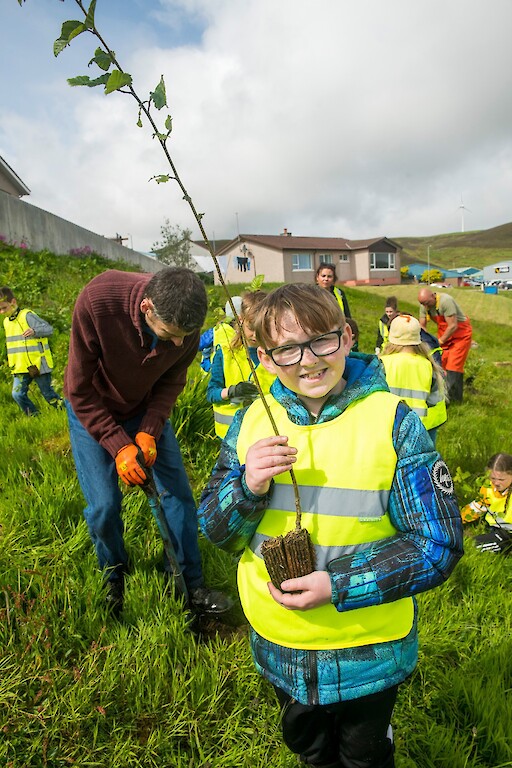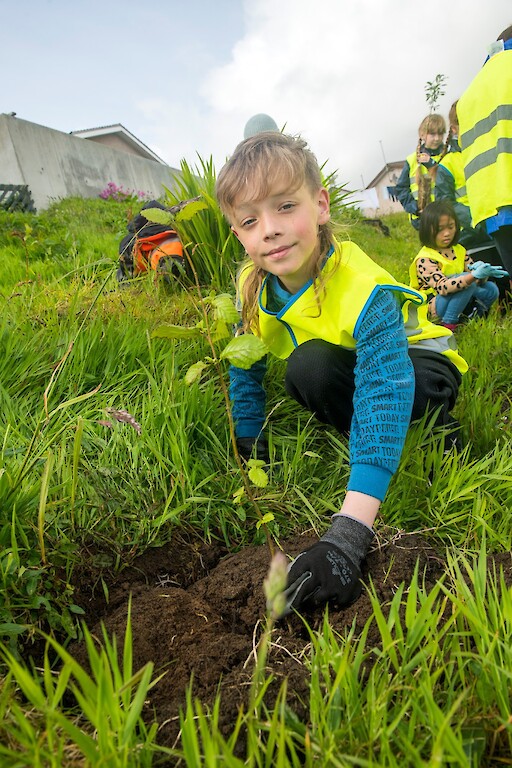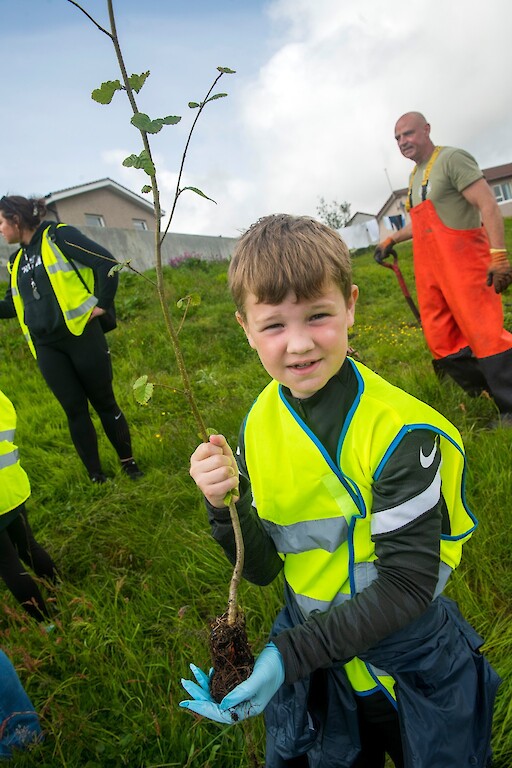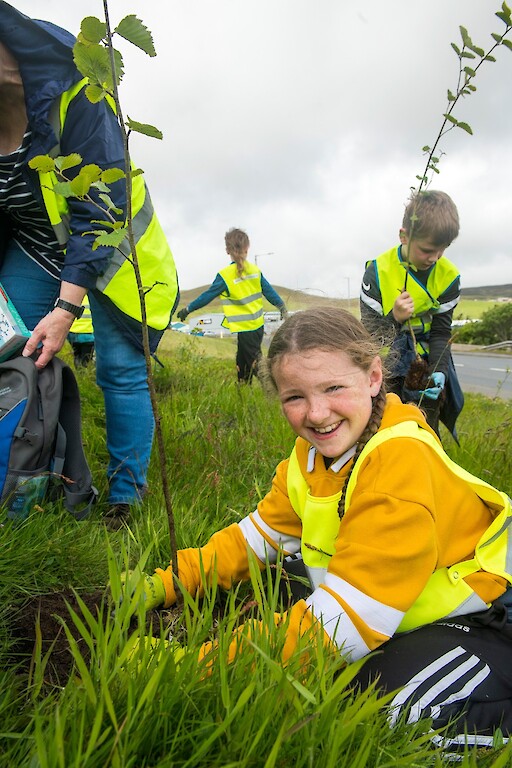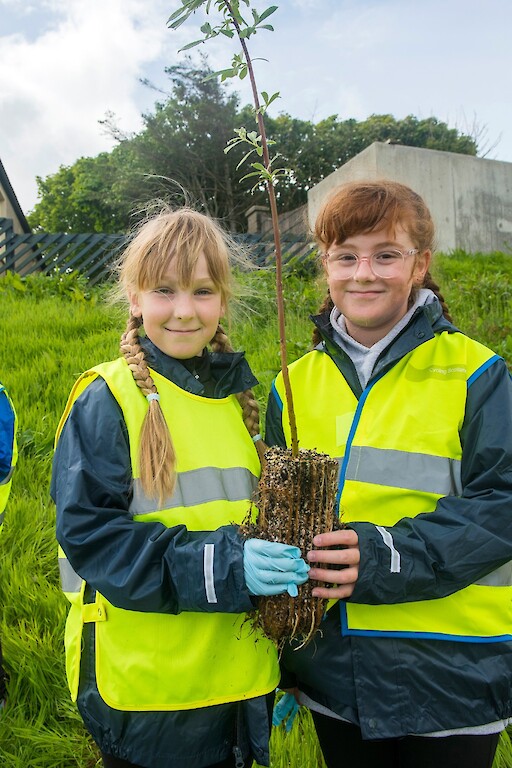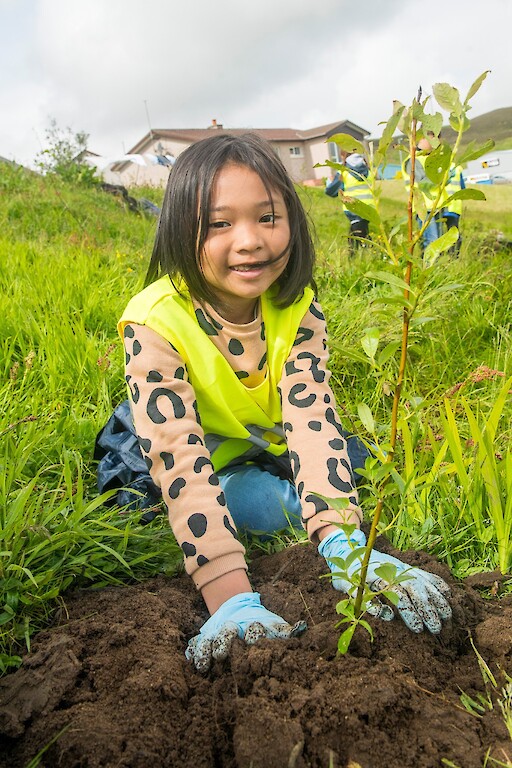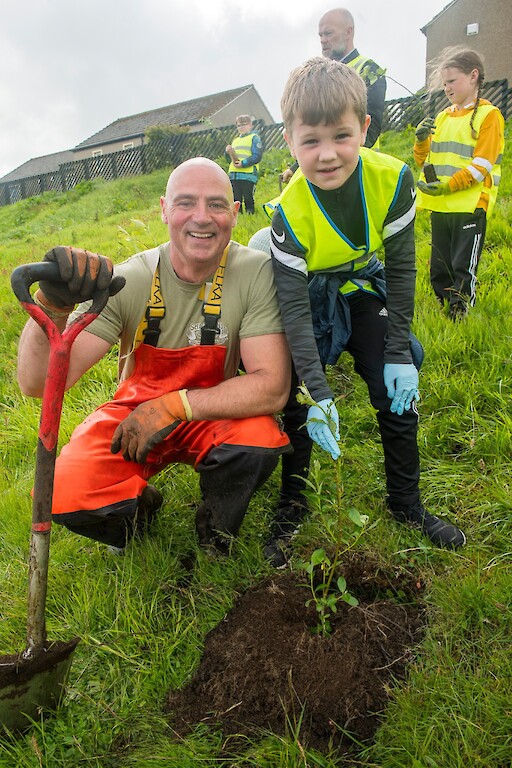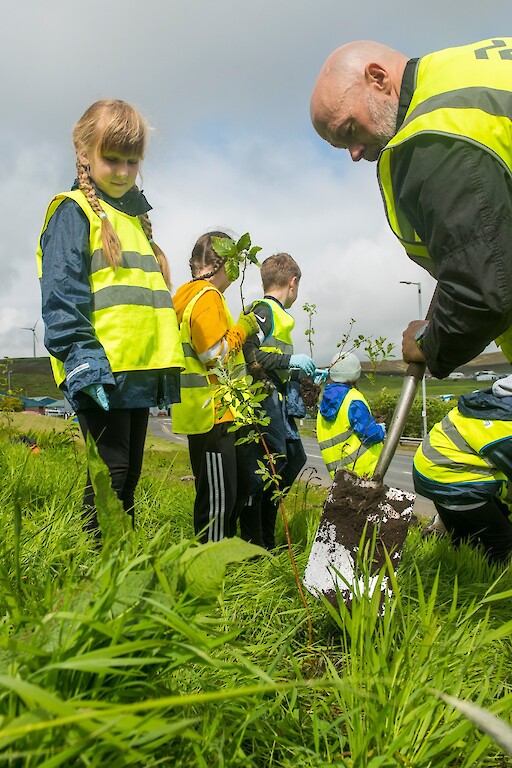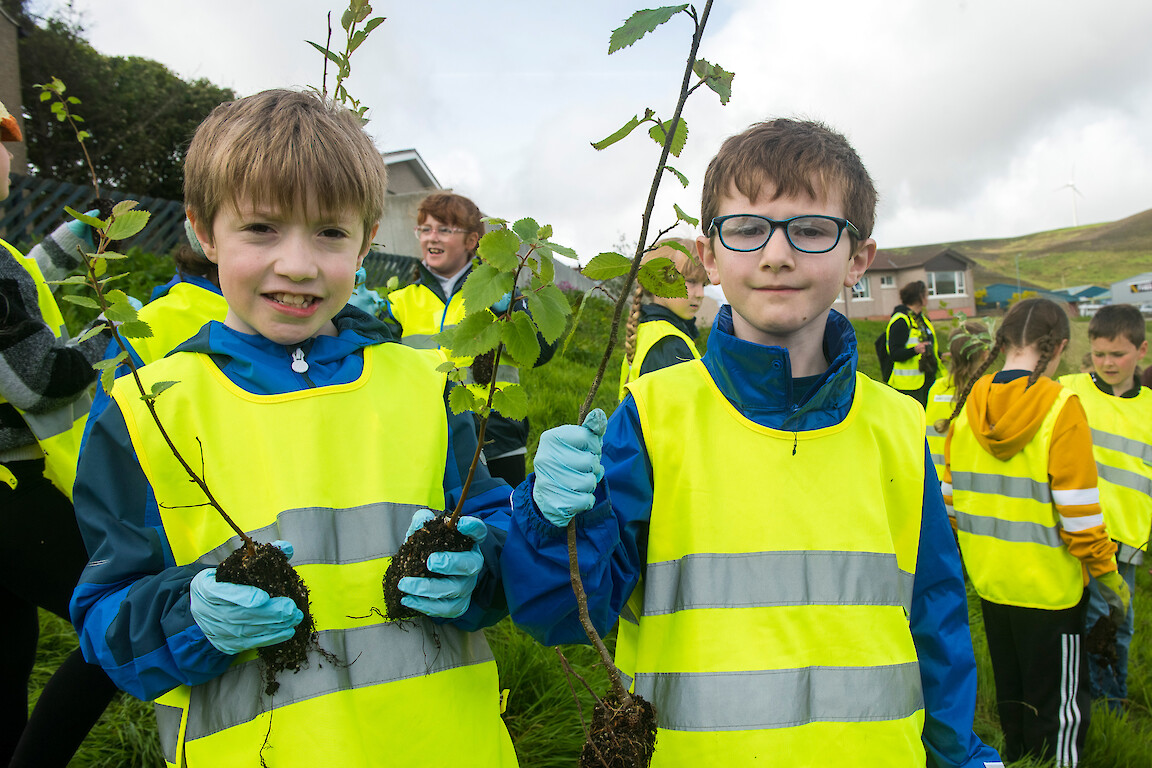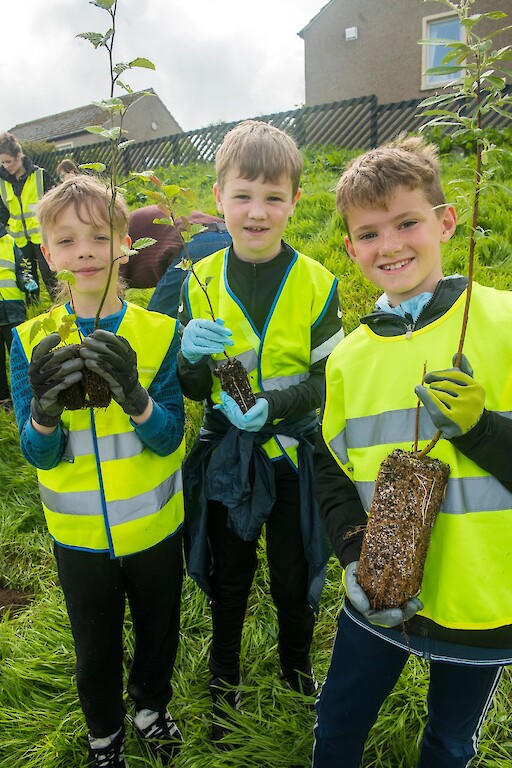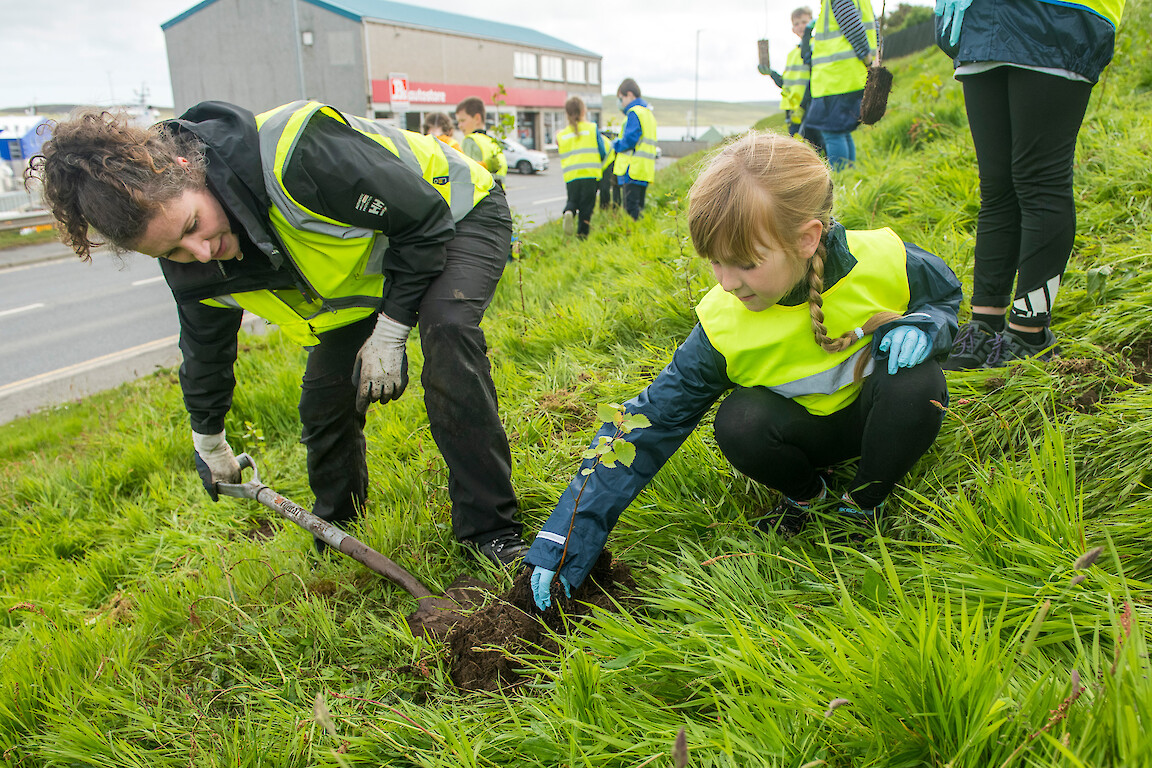Pupils again help restore environment
An initiative coordinated by Lerwick Port Authority has increased its contribution to rewilding an area of the harbour by more than doubling the number of trees planted in an annual project.
The variety of 150 larger trees and shrubs in the same area as last year at Holmsgarth Road have again been planted with assistance of Primary 4 pupils at Bell’s Brae School, Lerwick, as part of their ‘Living Things’ classroom project.
The selection was recommended and supplied by Shetland Amenity Trust (SAT) and sponsored by SSE Renewables/Viking Energy Wind Farm.
Paul Goddard, SAT’s Woodlands Team Leader, said: “We’re delighted to be working again with the Port Authority and the pupils of Bell’s Brae, continuing with the rewilding project started last year.
“With their help, we’ve planted a mix of native and non-native species, locally grown by SAT and chosen for their salt and wind tolerance. These include Downy birch, Common and Sitka alder, Alaskan willow and some flowering shrubs. They will provide a much-needed habitat for birds, invertebrates and pollinators, and bring the benefits to mental well-being that wild spaces, no matter how small, deliver.”
The enthusiastic pupils enjoyed their involvement. Millie Tulloch said: “When I drive past this area years later, I can say that I planted 30 of these trees.” Zara Nicolson commented: “Planting trees next to a busy road will clean the air because the trees take in air pollution and give out clean oxygen.”
Stuart Wadley, Lerwick Port Authority HSEQ Manager, said: “The success of last year’s planting of 70 trees and discussion with our partners encouraged us expand the project and move towards a larger environmental scheme to completely re-wild this unused area of the port estate.
“We have contributed the land, coordinated the partners and are grateful for their involvement, including that of the pupils, with the youngsters adding to their experience of nature.”
The Port Authority began supporting tree planting in 2017 to offset its paper usage, the equivalent of 12 trees annually. Benefits also include carbon capture, encouraging wildlife in a barren, grassed area, and reducing grass cutting and use of fossil fuels.

